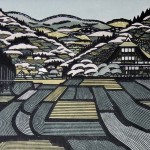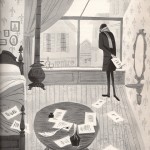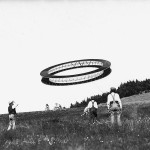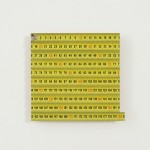The collection of 19th-century three-dimensional models of algebraic and differential equations at the Institut Henri Poincaré in Paris made a great impression on Surrealist artists. Allegedly, after Max Ernst brought these wood, metal, wire, and plaster forms to Man Ray’s attention, he was so impressed that he decided to photograph them.
In the thirty-one photographs, taken between 1934 and 1936, the objects are portrayed in dramatic black and white, decontextualized, without a recognizable background, and tightly cropped within the frame. Twelve of these photos first appeared in several issues of the revue “Les Cahiers d’art” in 1936 (N°1-2, year 11th) to illustrate Christian Zervos’ article on mathematics and abstraction (“Mathématiques et art abstrait”) and another by André Breton on the status of the object (“Crise de l’objet”). It goes without saying that Man Ray wasn’t really interested in the mathematical properties of the forms, nor in the practice of abstraction. The photographs enhance the tactile and anthropomorphic nature of the forms. Yet, devoid of any illustrative intention, they appear as an investigation into photography itself—a reflection on its means of formalization.
“The formulas accompanying them meant nothing to me, but the forms themselves were as varied and authentic as any in nature. The fact that they were man-made was of added importance to me and they could not be considered abstract as Breton feared when I first showed them to him – all abstract art appeared to me as fragments: enlargements of details in nature and art, whereas these objects were complete microcosms.” — Man Ray, quote from his autobiography, “Self Portrait.”
The works were displayed at an exhibition of Surrealist art at the New Burlington Gallery in London in 1936 and at ‘Fantastic Art, Dada, and Surrealism,’ organized by Alfred Barr at the Museum of Modern Art in 1936–37. Interestingly, between 1935 and 1948, the artist created a small album in which he mounted the contact prints, showing cropping lines, writing titles from Shakespeare’s works, and reproducing mathematical notations and other indications of various natures.

The photos and the forms remained an important preoccupation for Man Ray throughout the years: in 1948, the photos were reinterpreted in the series of paintings titled The Shakespearean Equations, which the artist created after fleeing France during the Nazi occupation, taking the photographs with him.












Further reading:
Éric Brunier, “Une autre logique. Sur les Objets mathématiques de Man Ray“.
Kirsten A. Hoving, “Abstract Vision and satisfied passion: Man Ray’s mathematical objects“.





Leave a Reply